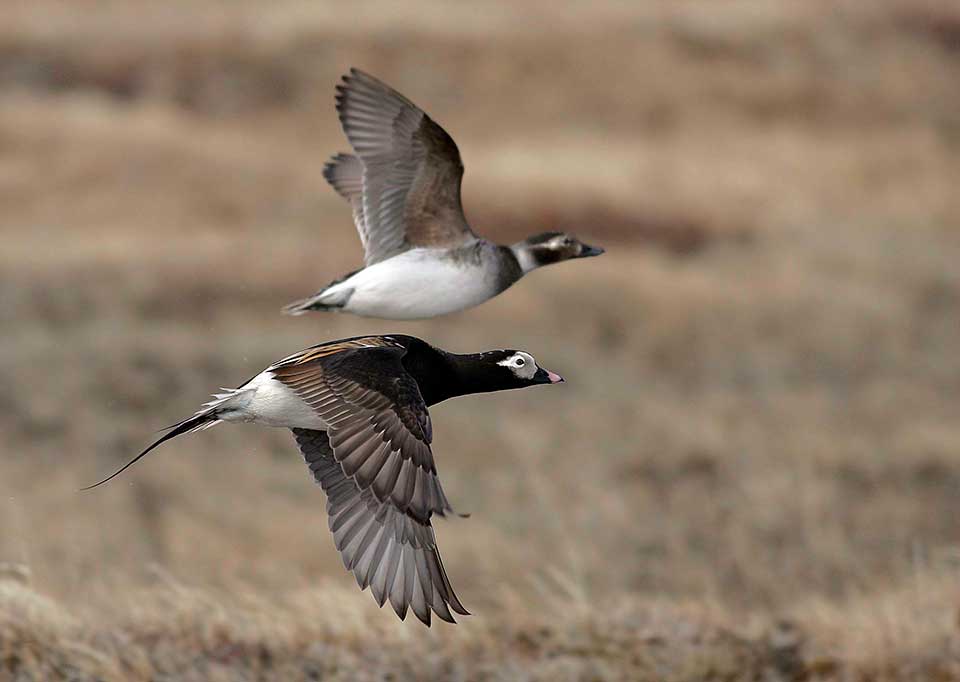SDJV02 Interim Report FY02
SDJV02 Interim Report FY03
SDJV02 Interim Report FY04
SDJV02 Interim Report FY06
SDJV02 Interim Report FY07
SDJV02 Interim Report FY08
SDJV02 Interim Report FY09
SDJV02 Final Report FY10
Related Publications
Bartzen, B.A., Dickson, D.L. & Bowman, T.D. 2017. Migration characteristics of long-tailed ducks (Clangula hyemalis) from the western Canadian Arctic. Polar Biology 40:1085–1099 https://doi.org/10.1007/s00300-016-2035-6
Dickson, D.L. 2012. Seasonal movement of Pacific Common Eiders breeding in arctic Canada. Technical Report Series 521, Canadian Wildlife Service, Edmonton, Alberta. v + 58 p. https://www.arlis.org/docs/vol1/K/795249691.pdf
Dickson, D.L. 2012. Seasonal Movement of King Eiders Breeding in Western Arctic Canada and Northern Alaska. Canadian Wildlife Service Technical Report Series Number 520, Canadian Wildlife Service, Edmonton, Alberta. https://epe.lac-bac.gc.ca/100/201/301/weekly_checklist/2012/internet/w12-37-U-E.html/collections/collection_2012/ec/CW69-5-520-eng.pdf
Dickson, D. L., and P. A. Smith. 2013. Habitat used by common and king eiders in spring in the southeast Beaufort Sea and overlap with resource exploration. The Journal of Wildlife Management 77:777–790. https://doi.org/10.1002/jwmg.529
Dickson, D. L., and H. G. Gilchrist. 2002. Status of Marine Birds of the Southeastern Beaufort Sea. Arctic 55:46–58. https://www.jstor.org/stable/40512419
Oppel, S., A. N. Powell, and D. L. Dickson. 2008. Timing and Distance of King Eider Migration and Winter Movements. The Condor 110:296–305. https://doi.org/10.1525/cond.2008.8502
